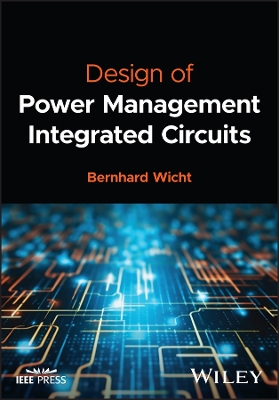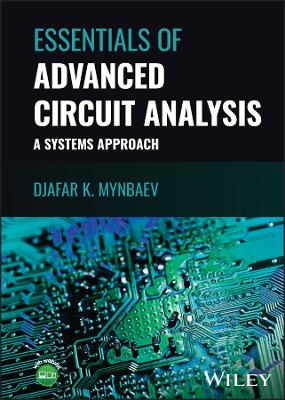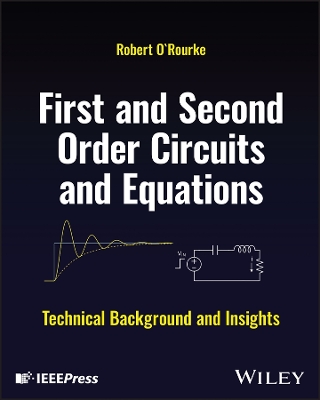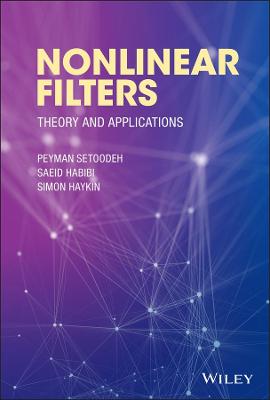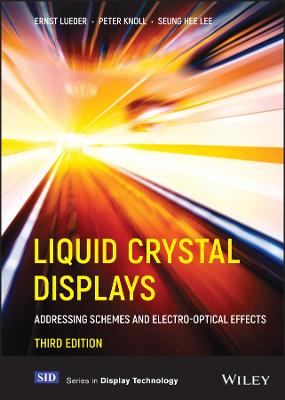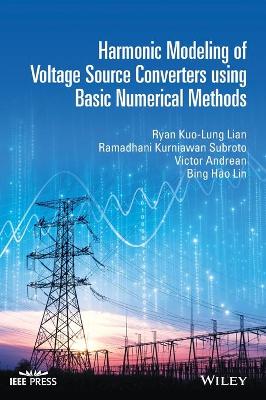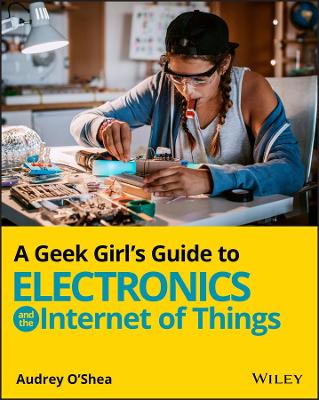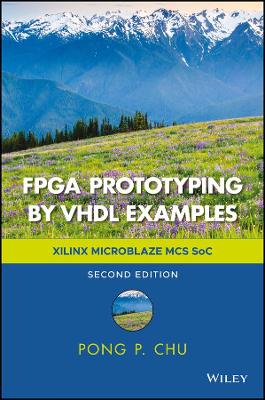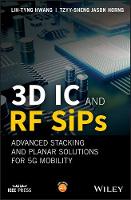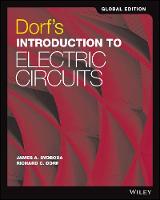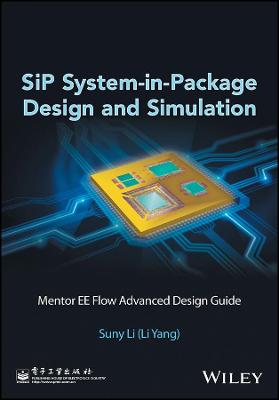CMOS
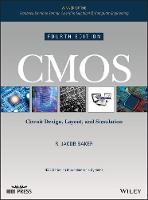 -15%
portes grátis
-15%
portes grátis
CMOS
Circuit Design, Layout, and Simulation
Baker, R. Jacob
John Wiley & Sons Inc
08/2019
1280
Dura
Inglês
9781119481515
15 a 20 dias
2510
Chapter 1 Introduction to CMOS Design 1
1.1 The CMOS IC Design Process 1
1.1.1 Fabrication 2
1.2 CMOS Background 5
1.3 An Introduction to SPICE 8
Chapter 2 The Well 31
2.1 Patterning 32
2.1.1 Patterning the N-well 35
2.2 Laying Out the N-well 35
2.2.1 Design Rules for the N-well 36
2.3 Resistance Calculation 36
2.3.1 The N-well Resistor 38
2.4 The N-well/Substrate Diode 39
2.4.1 A Brief Introduction to PN Junction Physics 39
2.4.2 Depletion Layer Capacitance 42
2.4.3 Storage or Diffusion Capacitance 45
2.4.4 SPICE Modeling 46
2.5 The RC Delay through the N-well 48
2.6 Twin Well Processes 51
Chapter 3 The Metal Layers 59
3.1 The Bonding Pad 59
3.1.1 Laying Out the Pad I 60
3.2 Design and Layout Using the Metal Layers 63
3.2.1 Metal1 and Via1 63
3.2.2 Parasitics Associated with the Metal Layers 63
3.2.3 Current-Carrying Limitations 67
3.2.4 Design Rules for the Metal Layers 68
3.2.5 Contact Resistance 69
3.3 Crosstalk and Ground Bounce 70
3.3.1 Crosstalk 71
3.3.2 Ground Bounce 72
3.4 Layout Examples 74
3.4.1 Laying Out the Pad II 74
3.4.2 Laying Out Metal Test Structures 76
Chapter 4 The Active and Poly Layers 83
4.1 Layout Using the Active and Poly Layers 83
4.1.1 Process Flow 90
4.2 Connecting Wires to Poly and Active 93
4.3 Electrostatic Discharge (ESD) Protection 99
Chapter 5 Resistors, Capacitors, MOSFETs 107
5.1 Resistors 107
5.2 Capacitors 115
5.3 MOSFETs 118
5.4 Layout Examples 125
Chapter 6 MOSFET Operation 135
6.1 MOSFET Capacitance Overview/Review 136
6.2 The Threshold Voltage 139
6.3 IV Characteristics of MOSFETs 144
6.3.1 MOSFET Operation in the Triode Region 144
6.3.2 The Saturation Region 146
6.4 SPICE Modeling of the MOSFET 149
6.4.1 Some SPICE Simulation Examples 151
6.4.2 The Subthreshold Current 152
6.5 Short-Channel MOSFETs 154
6.5.1 MOSFET Scaling 155
6.5.2 Short-Channel Effects 156
6.5.3 SPICE Models for Our Short-Channel CMOS Process 157
Chapter 7 CMOS Fabrication by Jeff Jessing 165
7.1 CMOS Unit Processes 165
7.1.1 Wafer Manufacture 165
7.1.2 Thermal Oxidation 167
7.1.3 Doping Processes 168
7.1.4 Photolithography 170
7.1.5 Thin Film Removal 173
7.1.6 Thin Film Deposition 177
7.2 CMOS Process Integration 180
7.2.1 Frontend-of-the-Line Integration 182
7.2.2 Backend-of-the-Line Integration 196
7.3 Backend Processes 210
7.4 Advanced CMOS Process Integration 212
7.4.1 FinFETs 213
7.4.2 Dual Damascene Low-k/Cu Interconnects 216
7.5 Summary 219
Chapter 8 Electrical Noise: An Overview 221
8.1 Signals 221
8.1.1 Power and Energy 221
8.1.2 Power Spectral Density 223
8.2 Circuit Noise 226
8.2.1 Calculating and Modeling Circuit Noise 227
8.2.2 Thermal Noise 231
8.2.3 Signal-to-Noise Ratio 237
8.2.4 Shot Noise 247
8.2.5 Flicker Noise 251
8.2.6 Other Noise Sources 258
8.3 Discussion 260
8.3.1 Correlation 260
8.3.2 Noise and Feedback 264
8.3.3 Some Final Notes Concerning Notation 267
Chapter 9 Models for Analog Design 277
9.1 Long-Channel MOSFETs 277
9.1.1 The Square-Law Equations 279
9.1.2 Small Signal Models 286
9.1.3 Temperature Effects 300
9.2 Short-Channel MOSFETs 302
9.2.1 General Design (A Starting Point) 303
9.2.2 Specific Design (A Discussion) 306
9.3 MOSFET Noise Modeling 308
Chapter 10 Models for Digital Design 327
10.1 The Digital MOSFET Model 328
10.1.2 Process Characteristic Time Constant 331
10.1.3 Delay and Transition Times 333
10.1.4 General Digital Design 326
10.2 The MOSFET Pass Gate 326
10.2.1 Delay through a Pass Gate 338
10.2.2 Delay through Series-Connected PGs 340
10.3 A Final Comment Concerning Measurements 341
Chapter 11 The Inverter 347
11.1 DC Characteristics 347
11.2 Switching Characteristics 352
11.3 Layout of the Inverter 356
11.4 Sizing for Large Capacitive Loads 358
11.5 Other Inverter Configurations 364
Chapter 12 Static Logic Gates 369
12.1 DC Characteristics of the NAND and NOR Gates 369
12.1.1 DC Characteristics of the NAND Gate 369
12.1.2 DC Characteristics of the NOR Gate 372
12.2 Layout of the NAND and NOR Gates 373
12.3 Switching Characteristics 374
12.3.1 NAND Gate 375
12.3.2 Number of Inputs 378
12.4 Complex CMOS Logic Gates 379
Chapter 13 Clocked Circuits 389
13.1 The CMOS TG 389
13.2 Applications of the Transmission Gate 391
13.3 Latches and Flip-Flops 395
13.4 Examples 402
Chapter 14 Dynamic Logic Gates 411
14.1 Fundamentals of Dynamic Logic 411
14.1.1 Charge Leakage 411
14.1.2 Simulating Dynamic Circuits 414
14.1.3 Nonoverlapping Clock Generation 415
14.1.4 CMOS TG in Dynamic Circuits 416
14.2 Clocked CMOS Logic 417
Chapter 15 CMOS Layout Examples 425
15.1 Chip Layout 426
15.2 Layout Steps by Dean Moriarty 434
Chapter 16 Memory Circuits 445
16.1 Array Architectures 446
16.1.1 Sensing Basics 446
16.1.2 The Folded Array 452
16.1.3 Chip Organization 458
16.2 Peripheral Circuits 458
16.2.1 Sense Amplifier Design 458
16.2.2 Row/Column Decoders 467
16.2.3 Row Drivers 470
16.3 Memory Cells 471
16.3.1 The SRAM Cell 473
16.3.2 Read-Only Memory (ROM) 473
16.3.3 Floating Gate Memory 473
Chapter 17 Sensing Using Modulation 493
17.1 Qualitative Discussion 494
17.1.1 Examples of DSM 494
17.1.2 Using DSM for Sensing in Flash Memory 496
17.2 Sensing Resistive Memory 506
17.3 Sensing in CMOS Imagers 513
Chapter 18 Special Purpose CMOS Circuits 533
18.1 The Schmitt Trigger 533
18.1.1 Design of the Schmitt Trigger 534
18.1.2 Applications of the Schmitt Trigger 536
18.2 Multivibrator Circuits 538
18.2.1 The Monostable Multivibrator 539
18.2.2 The Astable Multivibrator 540
18.3 Input Buffers 541
18.3.1 Basic Circuits 541
18.3.2 Differential Circuits 543
18.3.3 DC Reference 547
18.3.4 Reducing Buffer Input Resistance 550
18.4 Charge Pumps (Voltage Generators) 551
18.4.1 Increasing the Output Voltage 553
18.4.2 Generating Higher Voltages: The Dickson Charge Pump 553
18.4.3 Example 556
Chapter 19 Digital Phase-Locked Loops 561
19.1 The Phase Detector 563
19.1.1 The XOR Phase Detector 563
19.1.2 The Phase Frequency Detector 567
19.2 The Voltage-Controlled Oscillator 570
19.2.1 The Current-Starved VCO 570
19.2.2 Source-Coupled VCOs 574
19.3 The Loop Filter 576
19.3.1 XOR DPLL 577
19.3.2 PFD DPLL 583
19.4 System Concerns 590
19.4.1 Clock Recovery from NRZ Data 593
19.5 Delay-Locked Loops 600
19.6 Some Examples 603
19.6.1 A 2 GHz DLL 603
19.6.2 A 1 Gbit/s Clock-Recovery Circuit 609
Chapter 20 Current Mirrors 621
20.1 The Basic Current Mirror 621
20.1.1 Long-Channel Design 622
20.1.2 Matching Currents in the Mirror 624
20.1.3 Biasing the Current Mirror 628
20.1.4 Short-Channel Design 634
20.1.5 Temperature Behavior 638
20.1.6 Biasing in the Subthreshold Region 642
20.2 Cascoding the Current Mirror 643
20.2.1 The Simple Cascode 643
20.2.2 Low-Voltage (Wide-Swing) Cascode 645
20.2.3 Wide-Swing, Short-Channel Design 648
20.2.4 Regulated Drain Current Mirror 651
20.3 Biasing Circuits 653
20.3.1 Long-Channel Biasing Circuits 653
20.3.2 Short-Channel Biasing Circuits 656
20.3.3 A Final Comment 657
Chapter 21 Amplifiers 671
21.1 Gate-Drain Connected Loads 671
21.1.1 Common-Source (CS) Amplifiers 671
21.1.2 The Source Follower (Common-Drain Amplifier) 683
21.1.3 Common Gate Amplifier 684
21.2 Current Source Loads 685
21.2.1 Common-Source Amplifier 685
21.2.2 The Cascode Amplifier 698
21.2.3 The Common-Gate Amplifier 702
21.2.4 The Source Follower (Common-Drain Amplifier) 702
21.3 The Push-Pull Amplifier 710
21.3.1 DC Operation and Biasing 711
21.3.2 Small-Signal Analysis 714
21.3.3 Distortion 716
Chapter 22 Differential Amplifiers 735
22.1 The Source-Coupled Pair 735
22.1.1 DC Operation 735
22.1.2 AC Operation 741
22.1.3 Common-Mode Rejection Ratio 745
22.1.4 Matching Considerations 746
22.1.5 Noise Performance 749
22.1.6 Slew-Rate Limitations 750
22.2 The Source Cross-Coupled Pair 750
22.2.1 Current Source Load 754
22.3 Cascode Loads (The Telescopic Diff-Amp) 756
22.4 Wide-Swing Differential Amplifiers 758
22.4.1 Current Differential Amplifier 760
22.4.2 Constant Transconductance Diff-Amp 760
Chapter 23 Voltage References 773
23.1 MOSFET-Resistor Voltage References 774
23.1.1 The Resistor-MOSFET Divider 774
23.1.2 The MOSFET-Only Voltage Divider 777
23.1.3 Self-Biased Voltage References 778
23.2 Parasitic Diode-Based References 784
23.2.1 Long-Channel BGR Design 787
23.2.2 Short-Channel BGR Design 795
Chapter 24 Operational Amplifiers I 803
24.1 The Two-Stage Op-Amp 804
24.2 An Op-Amp with Output Buffer 822
24.3 The Operational Transconductance Amplifier (OTA) 824
24.4 Gain-Enhancement 835
24.5 Some Examples and Discussions 839
Chapter 25 Dynamic Analog Circuits 857
25.1 The MOSFET Switch 857
25.1.1 Sample-and-Hold Circuits 861
25.2 Fully-Differential Circuits 864
25.2.1 A Fully-Differential Sample-and-Hold 866
25.3 Switched-Capacitor Circuits 869
25.3.1 Switched-Capacitor Integrator 871
25.4 Circuits 879
Chapter 26 Operational Amplifiers II 889
26.1 Biasing for Power and Speed 889
26.1.1 Device Characteristics 890
26.1.2 Biasing Circuit 891
26.2 Basic Concepts 892
26.3 Basic Op-Amp Design 900
26.4 Op-Amp Design Using Switched-Capacitor CMFB 920
Chapter 27 Nonlinear Analog Circuits 933
27.1 Basic CMOS Comparator Design 933
27.1.1 Characterizing the Comparator 939
27.1.2 Clocked Comparators 942
27.1.3 Input Buffers Revisited 943
27.2 Adaptive Biasing 943
27.3 Analog Multipliers 946
27.3.1 The Multiplying Quad 947
Chapter 28 Data Converter Fundamentals by Harry Li 955
28.1 Analog Versus Discrete Time Signals 955
28.2 Converting Analog Signals to Digital Signals 956
28.3 Sample-and-Hold (S/H) Characteristics 959
28.4 Digital-to-Analog Converter (DAC) Specifications 961
28.5 Analog-to-Digital Converter (ADC) Specifications 970
28.6 Mixed-Signal Layout Issues 979
Chapter 29 Data Converter Architectures by Harry Li 987
29.1 DAC Architectures 987
29.1.1 Digital Input Code 987
29.1.2 Resistor String 987
29.1.3 R-2R Ladder Networks 992
29.1.4 Current Steering 995
29.1.5 Charge-Scaling DACs 999
29.1.6 Cyclic DAC 1003
29.1.7 Pipeline DAC 1005
29.2 ADC Architectures 1006
29.2.1 Flash 1006
29.2.2 The Two-Step Flash ADC 1010
29.2.3 The Pipeline ADC 1014
29.2.4 Integrating ADCs 1018
29.2.5 The Successive Approximation ADC 1022
29.2.6 The Oversampling ADC 1027
Chapter 30 Implementing Data Converters 1043
30.1 R-2R Topologies for DACs 1043
30.1.1 The Current-Mode R-2R DAC 1044
30.1.2 The Voltage-Mode R-2R DAC 1045
30.1.3 A Wide-Swing Current-Mode R-2R DAC 1047
30.1.4 Topologies Without an Op-Amp 1057
30.2 Op-Amps in Data Converters 1063
30.2.1 Op-Amp Gain 1066
30.2.2 Op-Amp Unity Gain Frequency 1067
30.2.3 Op-Amp Offset 1067
30.3 Implementing ADCs 1070
30.3.1 Implementing the S/H 1071
30.3.2 The Cyclic ADC 1077
30.3.3 The Pipeline ADC 1084
Chapter 31 Feedback Amplifiers with Harry Li 1115
31.1 The Feedback Equation 1115
31.2 Properties of Negative Feedback on Amplifier Design 1117
31.2.1 Gain Desensitivity 1117
31.3 Recognizing Feedback Topologies 1120
31.3.1 Input Mixing 1121
31.3.2 Output Sampling 1121
31.3.3 The Feedback Network 1122
31.3.4 Calculating Open-Loop Parameters 1125
31.3.5 Calculating Closed-Loop Parameters 1127
31.4 The Voltage Amp (Series-Shunt Feedback) 1128
31.5 The Transimpedance Amp (Shunt-Shunt Feedback) 1134
31.5.1 Simple Feedback Using a Gate-Drain Resistor 1140
31.6 The Transconductance Amp (Series-Series Feedback) 1142
31.7 The Current Amplifier (Shunt-Series Feedback) 1146
31.8 Stability 1148
31.8.1 The Return Ratio 1151
31.9 Design Examples 1154
31.9.1 Voltage Amplifiers 1154
31.9.2 A Transimpedance Amplifier 1158
Chapter 32 Hysteretic Power Converters 1175
32.1 A Review of Power and Energy Basics 1176
32.1.1 Energy Storage in Inductors and Capacitors 1177
32.1.2 Energy Use in Transmitting Data 1180
32.1.3 Selection and use of Switches 1181
32.2 Switching Power Supplies: Some Examples 1189
32.2.1 The Buck SPS 1189
32.2.2 The Boost SPS 1196
32.2.3 The Flyback SPS 1200
32.2.4 Pulse Width Modulation: A Control Loop Example 1204
32.3 Hysteretic Control 1210
32.3.1 Topologies 1211
32.3.2 Examples 1212
Index 1219
About the Author 1235
Chapter 1 Introduction to CMOS Design 1
1.1 The CMOS IC Design Process 1
1.1.1 Fabrication 2
1.2 CMOS Background 5
1.3 An Introduction to SPICE 8
Chapter 2 The Well 31
2.1 Patterning 32
2.1.1 Patterning the N-well 35
2.2 Laying Out the N-well 35
2.2.1 Design Rules for the N-well 36
2.3 Resistance Calculation 36
2.3.1 The N-well Resistor 38
2.4 The N-well/Substrate Diode 39
2.4.1 A Brief Introduction to PN Junction Physics 39
2.4.2 Depletion Layer Capacitance 42
2.4.3 Storage or Diffusion Capacitance 45
2.4.4 SPICE Modeling 46
2.5 The RC Delay through the N-well 48
2.6 Twin Well Processes 51
Chapter 3 The Metal Layers 59
3.1 The Bonding Pad 59
3.1.1 Laying Out the Pad I 60
3.2 Design and Layout Using the Metal Layers 63
3.2.1 Metal1 and Via1 63
3.2.2 Parasitics Associated with the Metal Layers 63
3.2.3 Current-Carrying Limitations 67
3.2.4 Design Rules for the Metal Layers 68
3.2.5 Contact Resistance 69
3.3 Crosstalk and Ground Bounce 70
3.3.1 Crosstalk 71
3.3.2 Ground Bounce 72
3.4 Layout Examples 74
3.4.1 Laying Out the Pad II 74
3.4.2 Laying Out Metal Test Structures 76
Chapter 4 The Active and Poly Layers 83
4.1 Layout Using the Active and Poly Layers 83
4.1.1 Process Flow 90
4.2 Connecting Wires to Poly and Active 93
4.3 Electrostatic Discharge (ESD) Protection 99
Chapter 5 Resistors, Capacitors, MOSFETs 107
5.1 Resistors 107
5.2 Capacitors 115
5.3 MOSFETs 118
5.4 Layout Examples 125
Chapter 6 MOSFET Operation 135
6.1 MOSFET Capacitance Overview/Review 136
6.2 The Threshold Voltage 139
6.3 IV Characteristics of MOSFETs 144
6.3.1 MOSFET Operation in the Triode Region 144
6.3.2 The Saturation Region 146
6.4 SPICE Modeling of the MOSFET 149
6.4.1 Some SPICE Simulation Examples 151
6.4.2 The Subthreshold Current 152
6.5 Short-Channel MOSFETs 154
6.5.1 MOSFET Scaling 155
6.5.2 Short-Channel Effects 156
6.5.3 SPICE Models for Our Short-Channel CMOS Process 157
Chapter 7 CMOS Fabrication by Jeff Jessing 165
7.1 CMOS Unit Processes 165
7.1.1 Wafer Manufacture 165
7.1.2 Thermal Oxidation 167
7.1.3 Doping Processes 168
7.1.4 Photolithography 170
7.1.5 Thin Film Removal 173
7.1.6 Thin Film Deposition 177
7.2 CMOS Process Integration 180
7.2.1 Frontend-of-the-Line Integration 182
7.2.2 Backend-of-the-Line Integration 196
7.3 Backend Processes 210
7.4 Advanced CMOS Process Integration 212
7.4.1 FinFETs 213
7.4.2 Dual Damascene Low-k/Cu Interconnects 216
7.5 Summary 219
Chapter 8 Electrical Noise: An Overview 221
8.1 Signals 221
8.1.1 Power and Energy 221
8.1.2 Power Spectral Density 223
8.2 Circuit Noise 226
8.2.1 Calculating and Modeling Circuit Noise 227
8.2.2 Thermal Noise 231
8.2.3 Signal-to-Noise Ratio 237
8.2.4 Shot Noise 247
8.2.5 Flicker Noise 251
8.2.6 Other Noise Sources 258
8.3 Discussion 260
8.3.1 Correlation 260
8.3.2 Noise and Feedback 264
8.3.3 Some Final Notes Concerning Notation 267
Chapter 9 Models for Analog Design 277
9.1 Long-Channel MOSFETs 277
9.1.1 The Square-Law Equations 279
9.1.2 Small Signal Models 286
9.1.3 Temperature Effects 300
9.2 Short-Channel MOSFETs 302
9.2.1 General Design (A Starting Point) 303
9.2.2 Specific Design (A Discussion) 306
9.3 MOSFET Noise Modeling 308
Chapter 10 Models for Digital Design 327
10.1 The Digital MOSFET Model 328
10.1.2 Process Characteristic Time Constant 331
10.1.3 Delay and Transition Times 333
10.1.4 General Digital Design 326
10.2 The MOSFET Pass Gate 326
10.2.1 Delay through a Pass Gate 338
10.2.2 Delay through Series-Connected PGs 340
10.3 A Final Comment Concerning Measurements 341
Chapter 11 The Inverter 347
11.1 DC Characteristics 347
11.2 Switching Characteristics 352
11.3 Layout of the Inverter 356
11.4 Sizing for Large Capacitive Loads 358
11.5 Other Inverter Configurations 364
Chapter 12 Static Logic Gates 369
12.1 DC Characteristics of the NAND and NOR Gates 369
12.1.1 DC Characteristics of the NAND Gate 369
12.1.2 DC Characteristics of the NOR Gate 372
12.2 Layout of the NAND and NOR Gates 373
12.3 Switching Characteristics 374
12.3.1 NAND Gate 375
12.3.2 Number of Inputs 378
12.4 Complex CMOS Logic Gates 379
Chapter 13 Clocked Circuits 389
13.1 The CMOS TG 389
13.2 Applications of the Transmission Gate 391
13.3 Latches and Flip-Flops 395
13.4 Examples 402
Chapter 14 Dynamic Logic Gates 411
14.1 Fundamentals of Dynamic Logic 411
14.1.1 Charge Leakage 411
14.1.2 Simulating Dynamic Circuits 414
14.1.3 Nonoverlapping Clock Generation 415
14.1.4 CMOS TG in Dynamic Circuits 416
14.2 Clocked CMOS Logic 417
Chapter 15 CMOS Layout Examples 425
15.1 Chip Layout 426
15.2 Layout Steps by Dean Moriarty 434
Chapter 16 Memory Circuits 445
16.1 Array Architectures 446
16.1.1 Sensing Basics 446
16.1.2 The Folded Array 452
16.1.3 Chip Organization 458
16.2 Peripheral Circuits 458
16.2.1 Sense Amplifier Design 458
16.2.2 Row/Column Decoders 467
16.2.3 Row Drivers 470
16.3 Memory Cells 471
16.3.1 The SRAM Cell 473
16.3.2 Read-Only Memory (ROM) 473
16.3.3 Floating Gate Memory 473
Chapter 17 Sensing Using Modulation 493
17.1 Qualitative Discussion 494
17.1.1 Examples of DSM 494
17.1.2 Using DSM for Sensing in Flash Memory 496
17.2 Sensing Resistive Memory 506
17.3 Sensing in CMOS Imagers 513
Chapter 18 Special Purpose CMOS Circuits 533
18.1 The Schmitt Trigger 533
18.1.1 Design of the Schmitt Trigger 534
18.1.2 Applications of the Schmitt Trigger 536
18.2 Multivibrator Circuits 538
18.2.1 The Monostable Multivibrator 539
18.2.2 The Astable Multivibrator 540
18.3 Input Buffers 541
18.3.1 Basic Circuits 541
18.3.2 Differential Circuits 543
18.3.3 DC Reference 547
18.3.4 Reducing Buffer Input Resistance 550
18.4 Charge Pumps (Voltage Generators) 551
18.4.1 Increasing the Output Voltage 553
18.4.2 Generating Higher Voltages: The Dickson Charge Pump 553
18.4.3 Example 556
Chapter 19 Digital Phase-Locked Loops 561
19.1 The Phase Detector 563
19.1.1 The XOR Phase Detector 563
19.1.2 The Phase Frequency Detector 567
19.2 The Voltage-Controlled Oscillator 570
19.2.1 The Current-Starved VCO 570
19.2.2 Source-Coupled VCOs 574
19.3 The Loop Filter 576
19.3.1 XOR DPLL 577
19.3.2 PFD DPLL 583
19.4 System Concerns 590
19.4.1 Clock Recovery from NRZ Data 593
19.5 Delay-Locked Loops 600
19.6 Some Examples 603
19.6.1 A 2 GHz DLL 603
19.6.2 A 1 Gbit/s Clock-Recovery Circuit 609
Chapter 20 Current Mirrors 621
20.1 The Basic Current Mirror 621
20.1.1 Long-Channel Design 622
20.1.2 Matching Currents in the Mirror 624
20.1.3 Biasing the Current Mirror 628
20.1.4 Short-Channel Design 634
20.1.5 Temperature Behavior 638
20.1.6 Biasing in the Subthreshold Region 642
20.2 Cascoding the Current Mirror 643
20.2.1 The Simple Cascode 643
20.2.2 Low-Voltage (Wide-Swing) Cascode 645
20.2.3 Wide-Swing, Short-Channel Design 648
20.2.4 Regulated Drain Current Mirror 651
20.3 Biasing Circuits 653
20.3.1 Long-Channel Biasing Circuits 653
20.3.2 Short-Channel Biasing Circuits 656
20.3.3 A Final Comment 657
Chapter 21 Amplifiers 671
21.1 Gate-Drain Connected Loads 671
21.1.1 Common-Source (CS) Amplifiers 671
21.1.2 The Source Follower (Common-Drain Amplifier) 683
21.1.3 Common Gate Amplifier 684
21.2 Current Source Loads 685
21.2.1 Common-Source Amplifier 685
21.2.2 The Cascode Amplifier 698
21.2.3 The Common-Gate Amplifier 702
21.2.4 The Source Follower (Common-Drain Amplifier) 702
21.3 The Push-Pull Amplifier 710
21.3.1 DC Operation and Biasing 711
21.3.2 Small-Signal Analysis 714
21.3.3 Distortion 716
Chapter 22 Differential Amplifiers 735
22.1 The Source-Coupled Pair 735
22.1.1 DC Operation 735
22.1.2 AC Operation 741
22.1.3 Common-Mode Rejection Ratio 745
22.1.4 Matching Considerations 746
22.1.5 Noise Performance 749
22.1.6 Slew-Rate Limitations 750
22.2 The Source Cross-Coupled Pair 750
22.2.1 Current Source Load 754
22.3 Cascode Loads (The Telescopic Diff-Amp) 756
22.4 Wide-Swing Differential Amplifiers 758
22.4.1 Current Differential Amplifier 760
22.4.2 Constant Transconductance Diff-Amp 760
Chapter 23 Voltage References 773
23.1 MOSFET-Resistor Voltage References 774
23.1.1 The Resistor-MOSFET Divider 774
23.1.2 The MOSFET-Only Voltage Divider 777
23.1.3 Self-Biased Voltage References 778
23.2 Parasitic Diode-Based References 784
23.2.1 Long-Channel BGR Design 787
23.2.2 Short-Channel BGR Design 795
Chapter 24 Operational Amplifiers I 803
24.1 The Two-Stage Op-Amp 804
24.2 An Op-Amp with Output Buffer 822
24.3 The Operational Transconductance Amplifier (OTA) 824
24.4 Gain-Enhancement 835
24.5 Some Examples and Discussions 839
Chapter 25 Dynamic Analog Circuits 857
25.1 The MOSFET Switch 857
25.1.1 Sample-and-Hold Circuits 861
25.2 Fully-Differential Circuits 864
25.2.1 A Fully-Differential Sample-and-Hold 866
25.3 Switched-Capacitor Circuits 869
25.3.1 Switched-Capacitor Integrator 871
25.4 Circuits 879
Chapter 26 Operational Amplifiers II 889
26.1 Biasing for Power and Speed 889
26.1.1 Device Characteristics 890
26.1.2 Biasing Circuit 891
26.2 Basic Concepts 892
26.3 Basic Op-Amp Design 900
26.4 Op-Amp Design Using Switched-Capacitor CMFB 920
Chapter 27 Nonlinear Analog Circuits 933
27.1 Basic CMOS Comparator Design 933
27.1.1 Characterizing the Comparator 939
27.1.2 Clocked Comparators 942
27.1.3 Input Buffers Revisited 943
27.2 Adaptive Biasing 943
27.3 Analog Multipliers 946
27.3.1 The Multiplying Quad 947
Chapter 28 Data Converter Fundamentals by Harry Li 955
28.1 Analog Versus Discrete Time Signals 955
28.2 Converting Analog Signals to Digital Signals 956
28.3 Sample-and-Hold (S/H) Characteristics 959
28.4 Digital-to-Analog Converter (DAC) Specifications 961
28.5 Analog-to-Digital Converter (ADC) Specifications 970
28.6 Mixed-Signal Layout Issues 979
Chapter 29 Data Converter Architectures by Harry Li 987
29.1 DAC Architectures 987
29.1.1 Digital Input Code 987
29.1.2 Resistor String 987
29.1.3 R-2R Ladder Networks 992
29.1.4 Current Steering 995
29.1.5 Charge-Scaling DACs 999
29.1.6 Cyclic DAC 1003
29.1.7 Pipeline DAC 1005
29.2 ADC Architectures 1006
29.2.1 Flash 1006
29.2.2 The Two-Step Flash ADC 1010
29.2.3 The Pipeline ADC 1014
29.2.4 Integrating ADCs 1018
29.2.5 The Successive Approximation ADC 1022
29.2.6 The Oversampling ADC 1027
Chapter 30 Implementing Data Converters 1043
30.1 R-2R Topologies for DACs 1043
30.1.1 The Current-Mode R-2R DAC 1044
30.1.2 The Voltage-Mode R-2R DAC 1045
30.1.3 A Wide-Swing Current-Mode R-2R DAC 1047
30.1.4 Topologies Without an Op-Amp 1057
30.2 Op-Amps in Data Converters 1063
30.2.1 Op-Amp Gain 1066
30.2.2 Op-Amp Unity Gain Frequency 1067
30.2.3 Op-Amp Offset 1067
30.3 Implementing ADCs 1070
30.3.1 Implementing the S/H 1071
30.3.2 The Cyclic ADC 1077
30.3.3 The Pipeline ADC 1084
Chapter 31 Feedback Amplifiers with Harry Li 1115
31.1 The Feedback Equation 1115
31.2 Properties of Negative Feedback on Amplifier Design 1117
31.2.1 Gain Desensitivity 1117
31.3 Recognizing Feedback Topologies 1120
31.3.1 Input Mixing 1121
31.3.2 Output Sampling 1121
31.3.3 The Feedback Network 1122
31.3.4 Calculating Open-Loop Parameters 1125
31.3.5 Calculating Closed-Loop Parameters 1127
31.4 The Voltage Amp (Series-Shunt Feedback) 1128
31.5 The Transimpedance Amp (Shunt-Shunt Feedback) 1134
31.5.1 Simple Feedback Using a Gate-Drain Resistor 1140
31.6 The Transconductance Amp (Series-Series Feedback) 1142
31.7 The Current Amplifier (Shunt-Series Feedback) 1146
31.8 Stability 1148
31.8.1 The Return Ratio 1151
31.9 Design Examples 1154
31.9.1 Voltage Amplifiers 1154
31.9.2 A Transimpedance Amplifier 1158
Chapter 32 Hysteretic Power Converters 1175
32.1 A Review of Power and Energy Basics 1176
32.1.1 Energy Storage in Inductors and Capacitors 1177
32.1.2 Energy Use in Transmitting Data 1180
32.1.3 Selection and use of Switches 1181
32.2 Switching Power Supplies: Some Examples 1189
32.2.1 The Buck SPS 1189
32.2.2 The Boost SPS 1196
32.2.3 The Flyback SPS 1200
32.2.4 Pulse Width Modulation: A Control Loop Example 1204
32.3 Hysteretic Control 1210
32.3.1 Topologies 1211
32.3.2 Examples 1212
Index 1219
About the Author 1235

